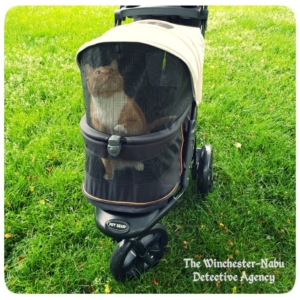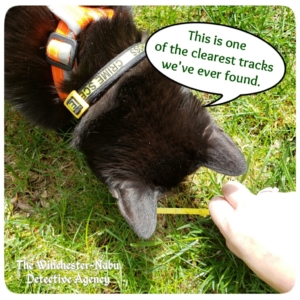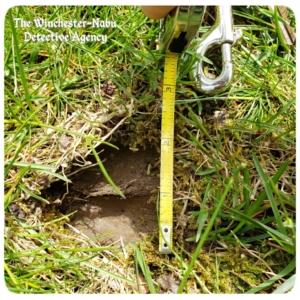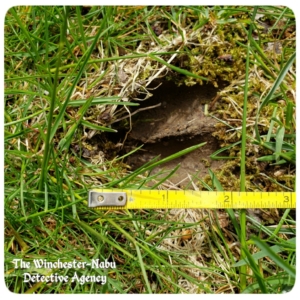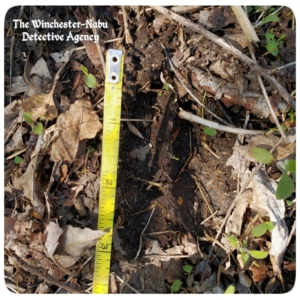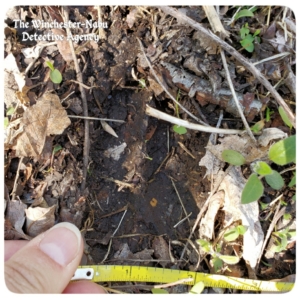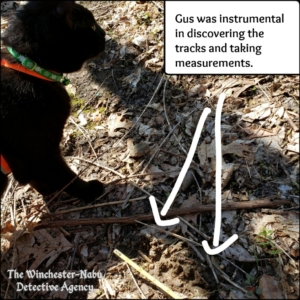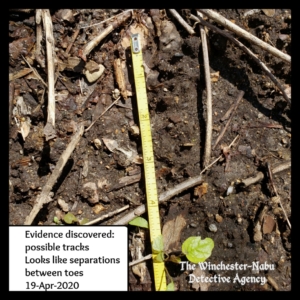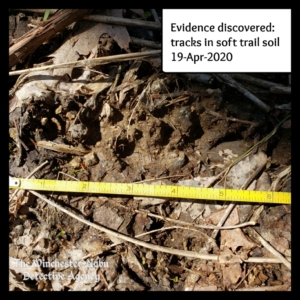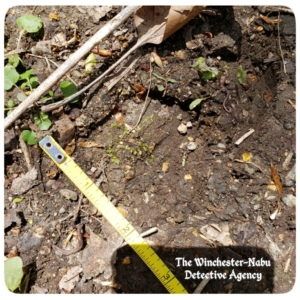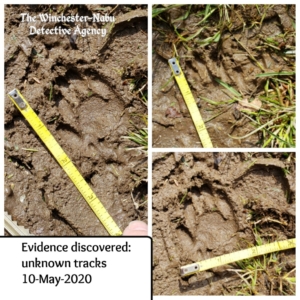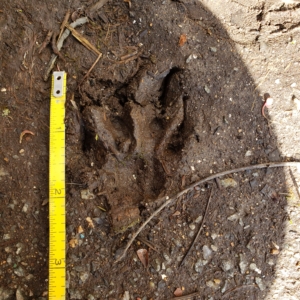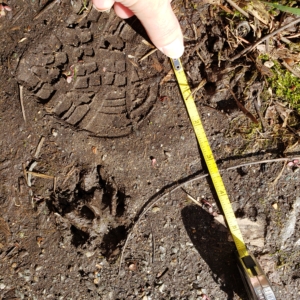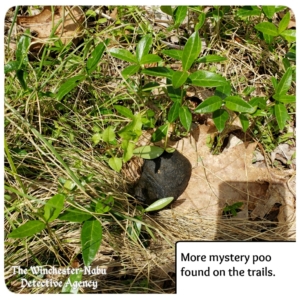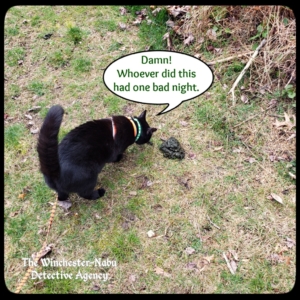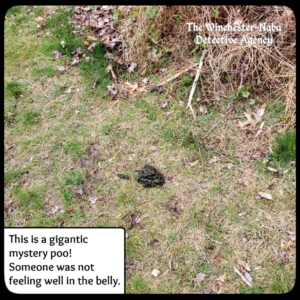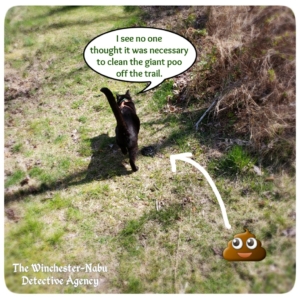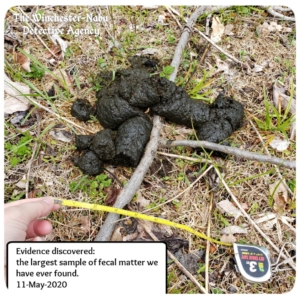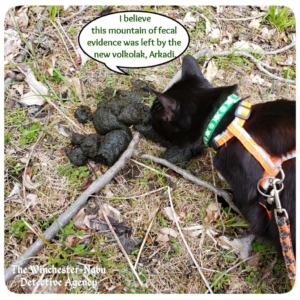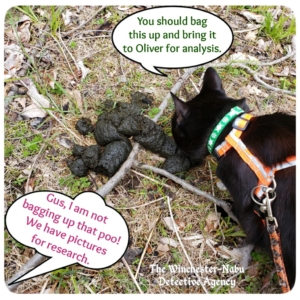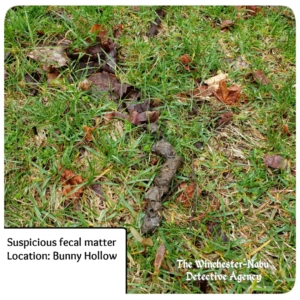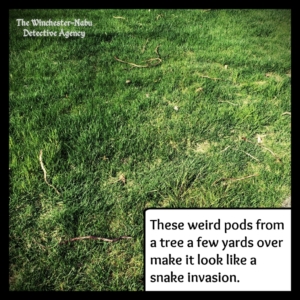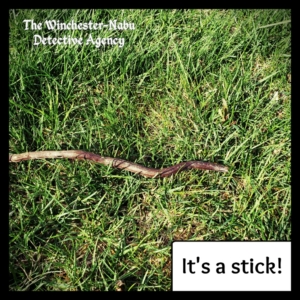Winchester-Nabu Detective Agency Year Four:
Case File No. 08-164
AMBER LOVE 29-JUNE-2020 Find out how all this began. Catch up on Year One, Year Two, and Year Three cases at the Winchester-Nabu Detective Agency. Thank you for all your financial and social support! Oliver and Gus are looking forward to bringing you more fascinating discoveries and investigations into the chipmunk mafia, the blue jay gang, the neighborhood critters, and cryptid sightings.
This work is supported by the generous backers who adore my cat stories at Patreon.com/amberunmasked and they also get first access to what’s happening with my books and podcast. For a one-time tip, you can go to the new PayPal.me.
Where We Left Off:
There have been two feline intruders at the estate and Gus was able to chase one of them.
Into the Woods:
Between all the major crimes cases that the Winchester-Nabu Detective Agency has been handling, we’ve also been gathering evidence on incidents that may or may not lead to something bigger. It’s mostly imprints of wildlife tracks and photos of poo. Lots of poo.
I can never tell when something we come across during patrols will end up being significant later. Gus thinks I should collect everything, but he isn’t willing to stop and wait for me to do the work. The times I have stopped and let him go ahead, he has ended up away from me for far too long and usually trespassing where he does not belong. Part of me thinks he also wants to make more research work for Oliver.
Let’s save the fecal samples for last and take a look at the most unusual tracks we’ve noticed in the vicinity. As always, we’d love reader feedback on whether our identifications are not accurate.
Devil-Deer Identification:
We found great impressions in hardening mud of hoof tracks. That means the Jersey devil-deer are still around. In fact, I caught one of the wingless variety on camera! Okay, it’s a terrible “Loch Ness Monster” type blur of a photo, but the beast ran right past me in the woods! It was so exciting. It clearly wanted nothing to do with me and Gus, who was under bushes stalking a chipmunk at the time.
More outstanding news is that we’ve seen one fawn ourselves and the elder humans reported seeing three little fawns playing like puppies in the driveway! They are truly adorable youngsters like bears who love to play.
I spotted a white-tailed doe in the backyard a couple of times and those images are at least good enough that you can tell what the heck it is. My theory is that the hybrid devil-deer are still able to reproduce with the mundane world deer which dilutes the mystical realm genetics.
Think of it like in cat breeding when people domesticate a serval, an actual wild cat from Africa. Then they begin breeding that serval with Bengal cats (a domesticated short hair and athletic breed). From that, you have invented the new cat breed called the Savannah. One generation removed from the full genetics of the wild serval is called an F1. They still retain many of the serval’s wild qualities and not easy to have as domesticated house pets. Taking an F1 and breeding that with a domestic Bengal would create an F2 generation (if I remember the history lesson from Jackson Galaxy). The F2 cats are a bit easier to have as house cats, but require a lot of attention, play, and work.
With that in mind, think about how a pure Jersey Devil would breed with the white-tailed deer to create a Gen 1 devil-deer. Then that devil-deer mates with another white-tailed deer and the mystical DNA is diluted more in a G2. And so on. Don’t forget your 8th grade biology about recessive genes. The wings of the Jersey Devil are not a guarantee and not a dominant gene. From the evidence we’ve gathered in our small hamlet in New Jersey, we seem to have more of the wingless variety of devil-deer hybrids.
Volkolak and Bear Tracks:
We’ve already presented our initial case findings on the new volkolak in the neighborhood, Arkadi. Before we had photos of the creature in all its glory, we had found the fecal and tracking evidence. What we were not sure about was if all of it was the same animal. And to be honest, we’re still not sure. As I examined the wide paw prints on the trail, the first thing I noticed was how defined the toe imprints were. Then I could see the more vague outline of the pad area and how wide it was. This was a first for me and probably Gus. Our first bear or volkolak track. The tracks in the area showed that it lingered in the spot, perhaps considering where to go or where its family was. The only reason we were able to have this experience was because the mud of the trail had started to dry, preserving it before anyone else trampled through the Witch’s Circle path.
Arkadi is a pretty big animal. Not the biggest around and we hope she is able to live long enough to fill out even more. If my measurements are accurate and one of the paw prints was only four inches wide at the pad, that’s not a substantial size for a black bear. it might indicate that the tracks we found belong to a cub. That may also confirm that the feces we found were not all from the same bruin.
Unknown Small Critter Tracks:
On the opposite end of the size spectrum, we found two different types of small tracks. Both samples were long and thin. One could be a skunk but since the mud was particularly squishy, the imprint itself was probably spread out larger across and in length than if the critter had undergone inked footprint examination during a formal suspect booking process. That one was found on the northern side of the estate property by Fort Winchester’s muddy area.
The second small set of wildlife tracks was in the small thruway between the hangar and the mobile command unit which leads to the junkyard. I didn’t want to assume tiny tracks meant a tiny animal like squirrels so I tried to compare the photos of the tracks to images online. I definitively ruled out either of the known feline trespassers. Canines could not be ruled out. Like the other small tracks, these had some disbursement in the mud. One track looks like there are long thin toes twice the length of the palm/pad area. Other samples of the imprints walking along that path have shorter toes and wide pad. There are critters that have both shapes — longer fingers on one set of appendages and shorter ones on the other — like squirrels, opossums and raccoons. There are so many possibilities.
New ID Tool to Test:
I decided to see if there were apps to download instead of trying to compare to a see of images, mostly of hand-drawn tracks, for comparison. I installed iNaturalist which had the most downloads and high stars. It said it’s for identification of animal tracks and plants. Super cool, right? But it’s not instant. You can upload a photo and add certain demographic information (luckily I could simply enter New Jersey and not my home address). Then you wait.
I thought the app worked like the fingerprint databases on modern crime dramas. It does not exactly. When I uploaded the photo of one footprint, it simply saved in my Observations; I guess I have to wait for another community member to ID it for me. When I uploaded a clear photo of the eastern red-spotted newt, the ID “Eastern North American Newt” came up immediately. From that test, it seems like photos of the animals (and perhaps plants) are instant, while tracks may take some community work. Next, I uploaded a photo of what I know is a sage plant in one of the gardens, but I don’t know the specific variety. “Sage” family came up instantly, and I made notes about the location and that I don’t know what kind of sage it is. It took a while to upload (maybe because my image size was high rez).
I wish there was a way to block certain families of animals so I wouldn’t have to see spiders when I click the “explore” button to see what other observations people are making.
Getting into the Shit of It:
Now comes the poop part. Some of which we can deduce based on size and shape. Others we can’t figure out and have classified as Unsolved. I document a lot of these findings on the Instagram (@amberunmasked) on the days we find them.
Bears and Volkolaks:
Possibly Fox or Kitsune:
Other Interesting Things:
There are a noteworthy discoveries that don’t fall into the categories of poop or animal tracks. See what things may require further investigation.
Are these part of Gorgon reproduction?
Case Statuses:
Since these are multiple cases, their statuses are unique to each. The volkolaks and devil-deer have ongoing cases.


